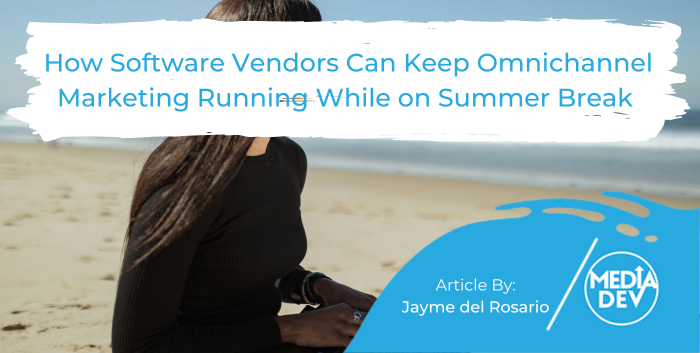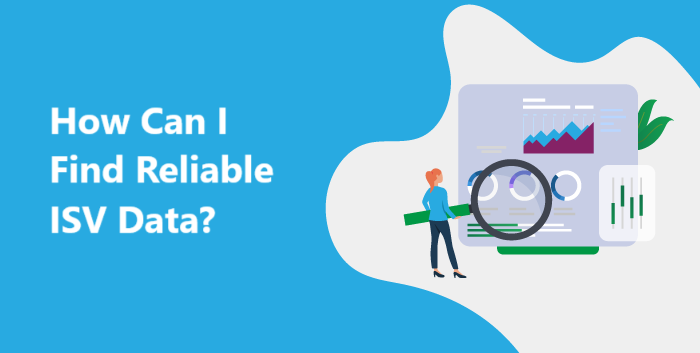We get contacted all the time by prospects looking to understand our services, and the value we can bring them. We get asked a lot about ROI. I often hear, “When am I going to see a return on my investment, and how many sales can you guarantee?”
While I’d love to have a quick and easy answer to that question, what I usually say is this: Marketing is not an exact science and MediaDev is not NASA. That’s not to diminish the importance of marketing ROI, nor underplay the need of most organizations to see an increase in sales (whether directly or indirectly) that can somehow be linked back to those initiatives. But seeing an immediate correlation between sales and marketing is not so straightforward either.
To illustrate my point, I’ll relate a story about my husband (who is far from being a Marketing Guru). Several years ago, we were watching TV and a car commercial came on. He said, “What kind of idiot would buy a car because they saw a commercial on television?” It’s an interesting question if you think about it.
My response was this: no one buys a car because they saw one commercial once on TV. But the advertisement, in association with other “touches” (many commercials over a prolonged period of time, combined with reading articles in Consumer Reports, plus speaking to a friend who just bought that car and loves it, a full-page print ad in your favorite magazine, an online review on a blog or forum you follow, etc) can have an impact on sales for a very select group of people: those that believe they are in need of a new car.
So, would you say then that the ROI for the one commercial is nil? Wouldn’t it also depend on when and where the ad aired (say during the Super Bowl as opposed to 2 am on an unheard-of local cable TV station), how many people saw it that are part of your core target audience (ie those that need a new car) and whether it was their first time seeing it or their 500th?
Again, marketing ROI is not that simple to calculate. Here are some ideas that need to be considered before you can answer the question for yourself:
What does your normal sales cycle look like?
Whether you are trying to sell a leather couch or a complex software solution, you need to have the big picture in mind to know from beginning (the point at which someone shows an interest) to end (the closed sales deal), what your sales cycle looks like, and how much time it takes to complete. Does your product impact the work processes of several departments in a company, thus requiring multiple levels of approval? Is your product a “must-have” or a “nice to have”?
Understanding why your current clients went through with their purchase is just as important as knowing why others didn’t; this may help you find ways to reduce your sales cycle down the road and see how you measure up against your competitors.
Do you know your buyer personas?
If your answer to this question is “Anyone could potentially buy my product,” you’re on the wrong path. Because it’s simply not true. A family with twin newborns will not buy a $20,000 white leather couch or a Tesla sports car. Rather than believing you have a universal product that can be useful for anyone, understand that your product is a commodity for a select few. Get to know those select few well because they are the people who are the most susceptible to going through with a purchase.
Targeting a specific audience with key messages that resonate and reiterate the “What’s in it for me?” approach will help keep the focus on the people that have the most buying potential for your product. Market research is an important way to gain insight on the buying patterns of your target audience and develop marketing messages that stick.
How do you quantify brand awareness?
Except for the buying Mavericks (those that are willing to take the risk of purchasing an unknown, new product — like the first person that bought a Tesla car, for example), most of us take some time to think about purchases that require a certain level of investment. We are not quick to jump in for fear of making the wrong choice, buying something that does not suit our needs or doesn’t work the way we expect it to. For B2B sales, this is, even more, the case when multiple decision-makers need to be able to evaluate the product before it is deployed across an organization.
Most people purchase brands that they trust; they choose brands that they know provide quality products and those that guarantee service as part of the deal. Increasing brand awareness is an integral part of most marketing strategies (especially for unknown names) to enhance recognition, and gain market share in the long run. Assuming that the “product will sell itself” if it’s a good product is an outdated notion in a sea of competitors and multi-channel media outlets.
Getting your name out there across channels, whether it be through paid media or targeted community management, is a necessary part of the game these days. And you may not always be able to quantify the exact impact of those efforts. It’s hard to say for sure that for every 100 people who learn about your product, 10 will end up purchasing it, for example. But if you want your brand to become a “household name”, you need to get your name out there regardless.
How to get the most bang for your buck?
In order to see the best return, there needs to be a coherent, overarching marketing strategy that will take your brand from point A to point B. We recommend holistic marketing instead of tackling it in a one-shot “spray and pray” effort, or as an isolated campaign.
Having your long-term vision in mind is the best way to take the bits and pieces and turn them into the whole puzzle. That means deploying both inbound and outbound tactics including content marketing (search engine optimization, social media management, content creation, and design, community management, and website re-design) and telemarketing (market research, outbound lead generation, brand awareness, and content promotion).
Continuing the effort over time is the best way to ensure that your sales pipeline is constantly bringing in new business.








